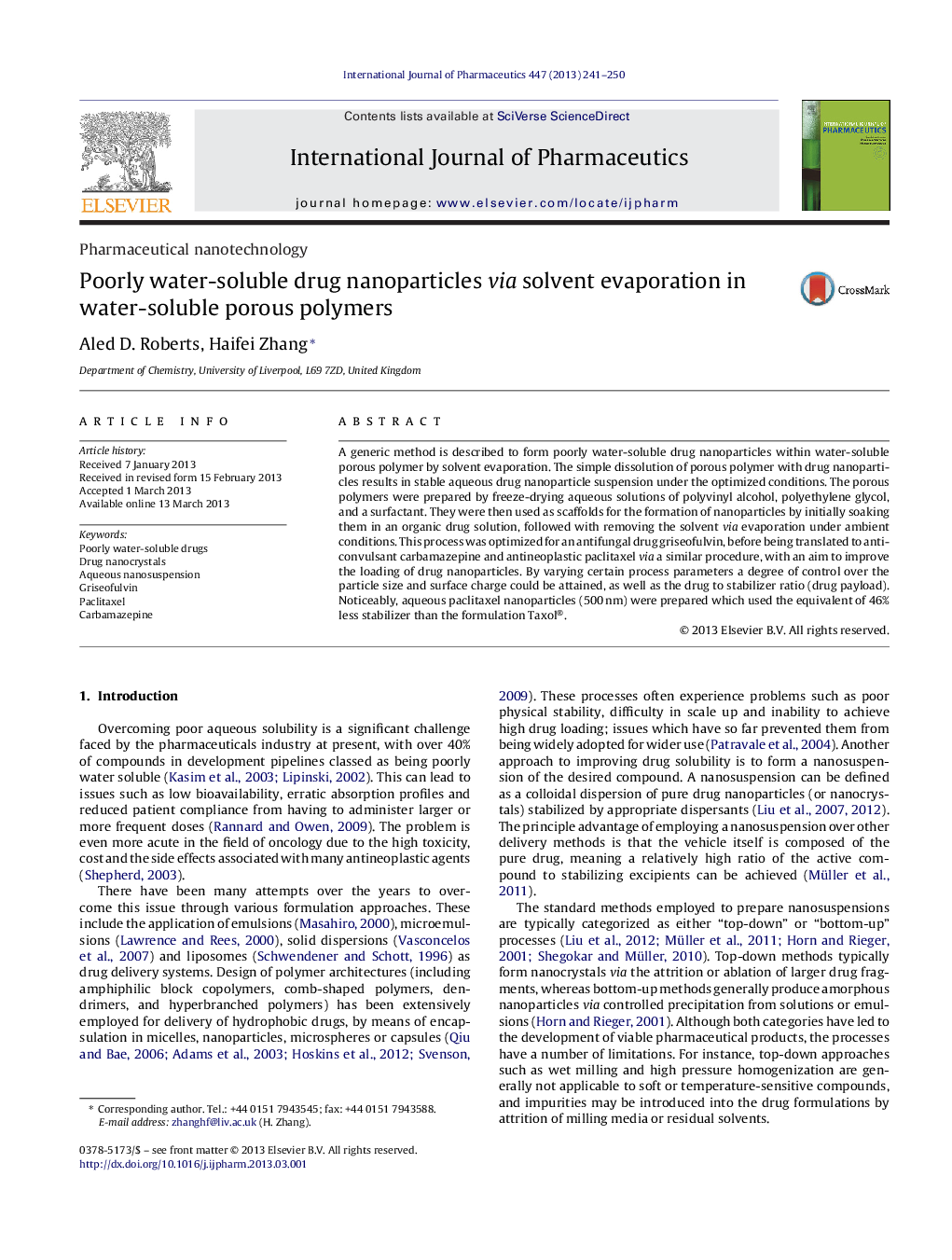| Article ID | Journal | Published Year | Pages | File Type |
|---|---|---|---|---|
| 5820239 | International Journal of Pharmaceutics | 2013 | 10 Pages |
Abstract
A generic method is described to form poorly water-soluble drug nanoparticles within water-soluble porous polymer by solvent evaporation. The simple dissolution of porous polymer with drug nanoparticles results in stable aqueous drug nanoparticle suspension under the optimized conditions. The porous polymers were prepared by freeze-drying aqueous solutions of polyvinyl alcohol, polyethylene glycol, and a surfactant. They were then used as scaffolds for the formation of nanoparticles by initially soaking them in an organic drug solution, followed with removing the solvent via evaporation under ambient conditions. This process was optimized for an antifungal drug griseofulvin, before being translated to anticonvulsant carbamazepine and antineoplastic paclitaxel via a similar procedure, with an aim to improve the loading of drug nanoparticles. By varying certain process parameters a degree of control over the particle size and surface charge could be attained, as well as the drug to stabilizer ratio (drug payload). Noticeably, aqueous paclitaxel nanoparticles (500Â nm) were prepared which used the equivalent of 46% less stabilizer than the formulation Taxol®.
Related Topics
Health Sciences
Pharmacology, Toxicology and Pharmaceutical Science
Pharmaceutical Science
Authors
Aled D. Roberts, Haifei Zhang,
